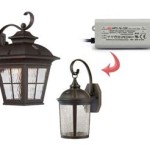Essential Aspects of Energy Efficient Outdoor Lighting Commercial
Energy-efficient lighting is critical for commercial properties looking to minimize operating costs and reduce their carbon footprint. Outdoor lighting, which plays a vital role in safety, security, and aesthetics, can contribute significantly to energy consumption. By understanding the essential aspects of energy-efficient outdoor lighting, businesses can make informed decisions to optimize their lighting systems, enhance performance, and achieve sustainability goals.
1. Choose Energy-Efficient Fixtures: The first step towards energy efficiency is selecting fixtures designed to minimize energy consumption. Opt for LED luminaires, known for their exceptional energy efficiency and long lifespan, which can significantly reduce energy usage compared to traditional lighting sources. Look for fixtures with high lumen output per watt, ensuring maximum lighting with minimal energy draw.
2. Use Occupancy Sensors and Dimmers: Occupancy sensors and dimmers offer significant energy savings by automatically adjusting lighting levels based on occupancy and ambient light conditions. Occupancy sensors detect presence and turn lights on or off accordingly, eliminating unnecessary energy wastage during unoccupied periods. Dimmers enable businesses to reduce light intensity during low-traffic hours, further conserving energy.
3. Optimize Lighting Design: Proper lighting design ensures efficient light distribution while minimizing glare and light pollution. Use photometric software to design a layout that meets illumination requirements without over-lighting. Consider using asymmetrical optics to direct light where it is needed, reducing energy waste and improving visibility.
4. Implement Lighting Controls: Smart lighting controls offer advanced energy management features. Centralized controllers, connected to sensors and fixtures, allow dimming, scheduling, and remote management of lighting systems. By tailoring lighting schedules to specific needs, businesses can avoid unnecessary energy consumption during non-business hours or during periods of low traffic.
5. Maintenance and Monitoring: Regular maintenance is essential to ensure optimal energy efficiency. Clean fixtures and replace bulbs promptly to maintain high light output and prevent energy loss. Monitoring energy usage through smart controls or sub-metering provides insights into lighting consumption patterns, facilitating targeted interventions for further energy savings.
Investing in energy-efficient outdoor lighting for commercial properties not only reduces operating costs but also contributes to environmental sustainability. By embracing these essential aspects, businesses can create well-lit, energy-efficient outdoor environments while minimizing their carbon footprint and maximizing efficiency.

How To Increase Commercial Energy Efficiency With Outdoor Lighting Controls Cur Gli Brands

Led Stadium Lights High Intensity Floodlights For Energy Efficient Illumination Of Large Venues Waterproof Durable Commercial Lighting Com

Lightdot 300w Led Flood Light Outdoor Stadium With Dusk To D

120w Led Commercial Solar Street Light Outdoor Ip67 Dusk To Dawn Yard Road Lamp

90w Led Solar Wall Light Commercial Dusk To Dawn Outdoor Road Yard Street Lamp

Commercial Outdoor Lighting Control Systems Devtech M2m

Commercial Led Outdoor Lighting Meteor Space Electical

18w Led Wall Pack Light With Photocell Outdoor 90w Hps Hid Equivalent 3000 4000 5000k Cct 2160lm Commercial And Industrial China Wallpack

Illuminate Your Space While Saving Energy A Guide To Commercial Light

Juyace 150w Led Parking Lot Light Dusk To Dawn Outdoor Lighting Commercial Flood Ip65 Waterproof 5000k Wall Mount 100 277v Shoe Box Street Yard Security Area 3 Pack Yahoo Ping







